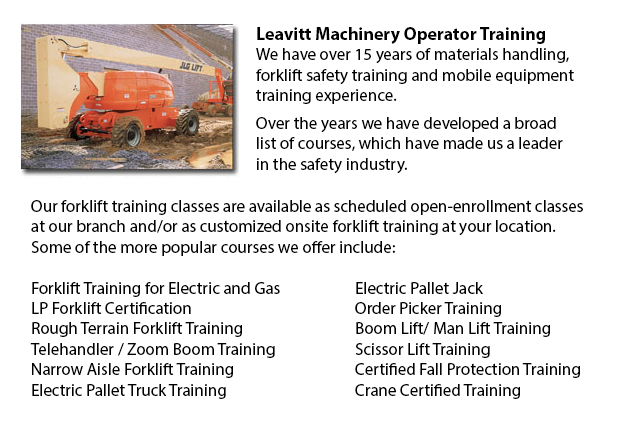
Boom Lift Certification Glendale - Using elevated work platforms allow for maintenance operations and work to be carried out at elevated work heights that were otherwise unreachable. Workers using boom lifts and scissor lifts can learn how to safely operate these machines by acquiring boom lift certification training.
Despite the variety in lift style, applications and site conditions, all lifts have the potential for death or serious injury when operated unsafely. Electrocution, falls, tip-overs and crushed body parts could be the tragic result of wrong operating procedures.
To be able to prevent aerial lift accidents, boom lift operators must be trained by workers who are qualified in the safe operation of the specific type of aerial lift they will be utilizing. Aerial lifts should not be be modified without the express permission of the manufacturer or other recognized entity. If you are renting a lift, ensure that it is correctly maintained. Prior to utilizing, controls and safety devices have to be inspected to make sure they are properly working.
It is essential to follow safe operating procedures in order to avoid workplace accidents. Driving an aerial lift while the lift is extended should not be carried out, nevertheless, a few models are designed to be driven when the lift is extended. Always set brakes. Set outriggers, if available. Avoid slopes, but when necessary make use of wheel chocks on slopes that do not go beyond the manufacturer's slope restrictions. Adhere to manufacturer's weight and load limits. When standing on the boom lift's platform, utilize full-body harnesses or a safety belt with a two-foot lanyard tied to the basket or boom. Fall protection is not required for scissor lifts that have guardrails. Never climb or sit on guardrails.
This course comprises the following topics: training and certification; safety guidelines to be able to prevent a tip-over; surface conditions and slopes; checking the work area & travel path; stability factors; other tips for maintaining stability; weight capacity; leverage; pre-operational check; testing control functions; mounting a vehicle; safe operating practices; safe driving procedures; overhead obstacles and power lines; PPE and fall protection; using lanyards and harness; and avoid falling from platforms.
When successful, the trained worker will be familiar with the following: authorization and training procedures; pre-operational inspection procedures; how to avoid tip-overs; factors affecting the stability of boom and scissor lifts; how to use PPE, how to use the testing control functions and fall prevention strategies.
-
Aerial Lift Train the Trainer Glendale
Aerial Lift Train the Trainer Glendale - The Aerial Lifts Train the Trainer Certification Program will teach trainers how to effectively train operators in safe industrial mobile machine operation. Trainers are given in-depth instruction on aerial li... More -
Forklift License Glendale
Forklift License Glendale - In North America, acquiring a forklift license or forklift certification involves hands-on and classroom training. Regulatory control over certification, training and license for powered industrial truck operators falls un... More -
Telehandler Certification Glendale
Telehandler Certification Glendale - Telehandler certification programs are both for operators who have some experience driving a typical forklift and for individuals with no experience. The real-world training provided by these courses produces grad... More -
Operator Safety Training and Re-Qualification Training and In-House Instructor Training in Glendale
Forklifts are used in almost all warehouse operations and in boat yards and in industrial construction sites. The reach feature of a forklift is a very important component utilized in a variety of applications like for example when a shelving system... More -
Manlift Training Glendale
Manlift Training Glendale - Different manlift training programs include the content and review of manlift devices. An important portion of the program is the practicum where students show their practical ability and knowledge to safely operate a manl... More -
Crane Certification Glendale
Crane Certification Glendale - The Crane Certification Program consists of the industry suggested subject matter which will teach the safe and efficient operation of cranes. The individual would train in the following: how to identify cranes and thei... More -
Loader Ticket Glendale
Loader Ticket Glendale - Gehl articulated loaders have been made to suit practically every condition. They offer optimal maneuverability and great traction due to a heavy-duty oscillating joint that provides 45-degree rotating angles right and left,... More -
Crane Ticket Glendale
Crane Ticket Glendale - The new version of a crane could be either simple or complex, and cranes vary based on their use. Mobile cranes, for instance are rather simple. A telescopic boom or steel truss mounts its movable platform. A system of levers... More

Forklift Training Glendale
TOLL FREE: 1-888-254-6157
Glendale, Arizona
forkliftcertificationglendale.com
Email Us
About Us


